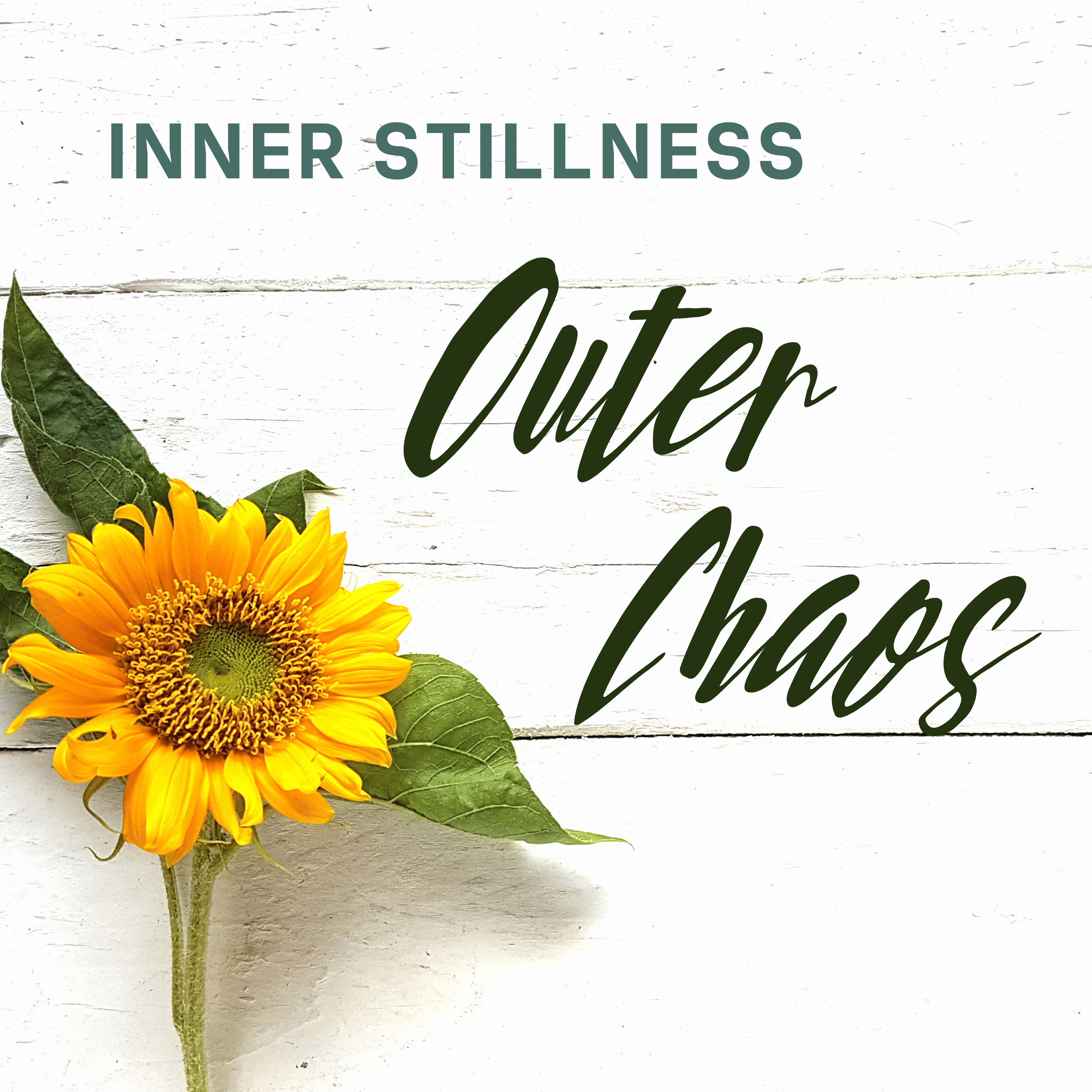

Why one-size-fits-all approaches to wellness may not work for everyone
Inner Stillness Outer Chaos
| Avery Thatcher | Rating 0 (0) (0) |
| becomingavery.com | Launched: Apr 11, 2024 |
| podcast@becomingavery.com | Season: 2 Episode: 12 |
When you think of meditation, you likely think about someone sitting down on the floor, legs crossed, eyes closed, hands resting on their knees, breathing deeply and looking calm and relaxed.
But what if meditation didn’t have to look that way? What if all of the typical self-care practices could be adapted to what works for you, not what everybody else seems to be doing?
SUBSCRIBE
Episode Chapters
When you think of meditation, you likely think about someone sitting down on the floor, legs crossed, eyes closed, hands resting on their knees, breathing deeply and looking calm and relaxed.
But what if meditation didn’t have to look that way? What if all of the typical self-care practices could be adapted to what works for you, not what everybody else seems to be doing?
When you think of meditation, you likely think about someone sitting down on the floor, legs crossed, eyes closed, hands resting on their knees, breathing deeply and looking calm and relaxed.
But what if meditation didn’t have to look that way? What if all of the typical self-care practices could be adapted to what works for you, not what everybody else seems to be doing?
I was on a call with a client the other day and it was towards the end of the call that I shared a guided meditation with them that I wanted them to try which would help them connect to their Inner Objective Observer. Immediately their defences went up and they started explaining why meditation doesn’t work for them, how it doesn’t work with their ADHD, and how they either can’t sit still or fall asleep instead of following the instructions.
Before they could go on further, I stopped them and said “Why does meditation have to be done sitting or lying down? Why can’t it be on a quiet walk outside, or while doing the dishes or getting ready for bed?”
They looked at me with a mix of shock and curiosity.
Just because something is represented one way in the media doesn’t mean that’s the way it needs to be for everyone.
This is where svadhyaya or self-study, comes into play. As my client’s reaction to meditation highlighted, the path to self-awareness often begins by challenging conventional norms and exploring alternative approaches to well-being.
Listening to our body, our mind, and what works and doesn’t work for us, is essential. Then we can start adapting these practices in a way that will make us the most successful, at least initially.
Another prime example is what we’re told is an ideal morning routine. Sure, I could try and start my morning completely analog without touching my phone and be fully present with myself and withdrawn from the busy world we live in while I move though my morning, drink my tea, meditate and write in my journal.
But my brain doesn’t work that way. I can’t find the calm space to do something like meditating or enjoying a slow cup of tea without:
- checking my email and triaging what needs to be attended to first, or
- looking at my to-do list and checking in with my team to see if they have any questions I need to address because they work in vastly different time zones to me, or
- looking at my calendar so I can put alarms on my watch so I don’t miss any appointments, or
- checking in with my client communication platform to see who has questions and who I need to prioritize a time to connect with today.
Sure, I could move forward with a completely unplugged morning and not do any of these things before I get out of bed. But then my anxiety would be running around like a chicken in my brain making all the noise and making it even harder to focus on setting myself up for the day.
You see, it’s not about rigidly following someone else’s suggestions or philosophies because it works for them.
When we look at the 8 limbs of yoga documented by Patanjali, well he lived in a very different time than we do now.
This is why we have to be curious, learn what works for us, figure out what doesn’t and be intentional.
Maybe it does work for you to not look at your phone until you get out of bed. For me, it doesn’t.
Maybe building your time into your regular routine to meditate or calm your mind works for you. For me it doesn’t because I have to be mindful to use my mental energy when I have it, because of my disability it typically doesn’t last long. I value flexibility, so I need my calming practices to be flexible.
Over the years of living with multiple chronic illnesses, and now a new one which I’ve decided to call Mable (shoutout to my friend Kaneesha who helped me decide on the name) I’ve learned the very essential skill of listening to the subtle and not so subtle signs. Some days it’s easier than others, but regardless I know that I have consistently better days when I intentionally take time to slow down and quiet down enough to hear that sometimes quiet inner voice letting me know what I need.
This is something that my therapist called me out on recently. It’s one of those many moments when a therapist says something and it almost rings in your body, it just is exactly what you needed to hear right at that moment to snap you out of a pattern that wasn’t serving you.
Anyway, we were talking about how unfit I feel and how unhappy I am with my weight and how I feel in my body. I was thinking she’d help me thing through how to process some of the health grief I had after going from someone who was very active and strong, to gaining all the weight I have with my disability (and the thyroid mass that was removed, “Bob”, caused a lot of the rapid weight gain as well).
Then, like all good therapists do, she started asking questions to help me dig to the heart of the problem. I thought I wanted to work out and get healthier and stronger.
My biggest problem was that working out in the typical way doesn’t work for my body and my energy. I can do about 8 - 10 minutes at a time before I feel incredibly awful, and if I push through and do more, I’ll likely be unable to do much of anything the next day. There was my roadblock.
I thought I just needed help rearranging my schedule and shifting my priorities to make working out a part of my routine.
Turns out I was actually just scared of dying.
You see, I saw working out in the typical way with weights and cardio as a way to support my body if/when (more likely when) I get a new diagnosis that takes away a little bit more of my health. I was trying to work out from a place of fear and wanting to set myself up for as much success as possible when the inevitable new health problems pop up.
But that way of working out was no longer serving me. It didn’t fit with what my body needs right now.
And then there was the moment when I realized that what I’ve been drawn to all this time, that I was fighting to try and make time and reserve energy for lifting weights or going on the rowing machine or treadmill. Turns out that my body knew what I needed not just for my physical well being, but my emotional and mental well being also.
I’ve been craving more yoga for me, not just yoga when I teach, but more of my own personal yoga practice.
I felt tears welling up in my eyes as I realized that this was exactly what I needed. I am scared of dying and I wanted to support my chance at longevity. The lightbulb moment was when I remembered that many yogi gurus live a very long, very healthy, very mobile life.
Two things were validated for me at that moment. First, that we all need someone in our lives that can call us out and help us see the truth that we often protect ourselves from. Second, was that I need to keep working on listening to myself more.
Some of it was that I had a fixed mindset on what working out looked like. Some of it was that I didn’t see yoga as a weight loss strategy and on some level that’s what I thought I wanted.
Now if you’re wondering how to do this for yourself, and how to start listening to yourself a bit better so you can be consistent with your well being, start by:
- Asking yourself “Is this actually working for me, or do I just want it to work for me?”
- Noting how much willpower it takes to be consistent with whatever habit you’re trying to build.
- Be curious and experiment with different ways to do the strategy that you’re trying to create more calm in your life.
Life’s too short, too messy, and too complicated to spend time forcing yourself to do something in a particular way just because you think you should.
Experiment, be playful, and give yourself permission to explore.
